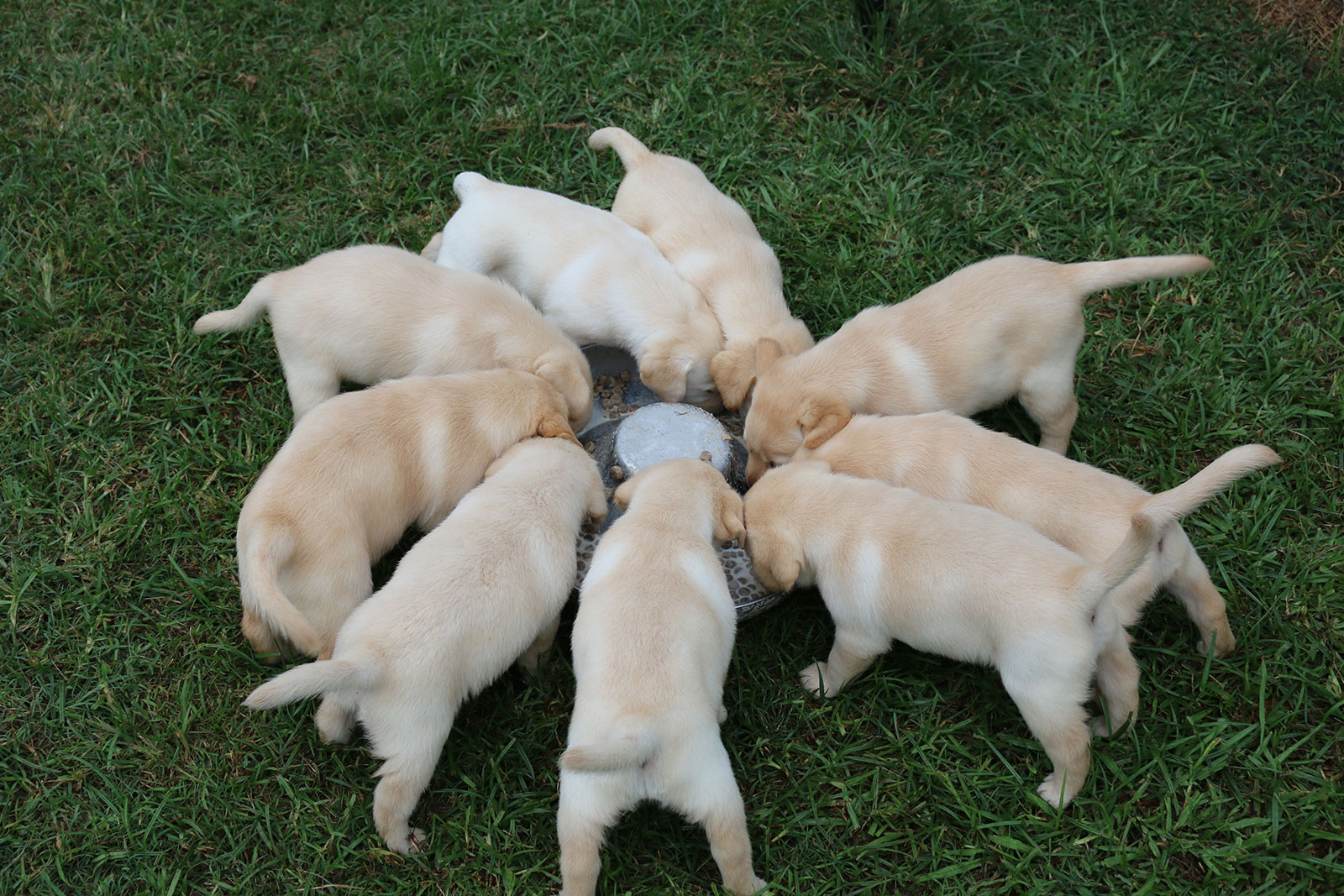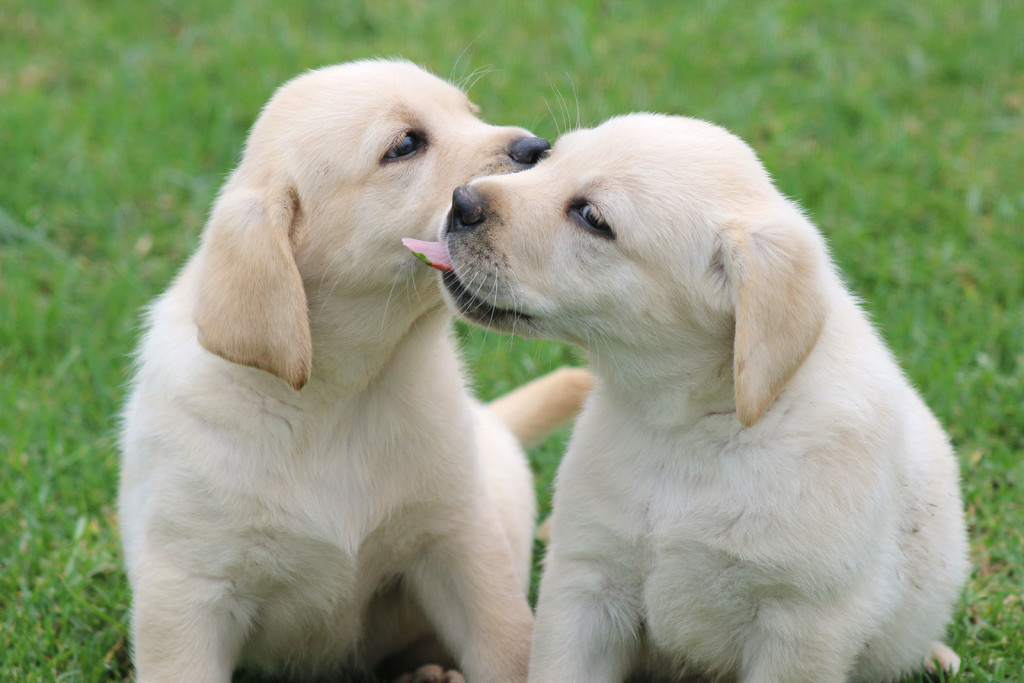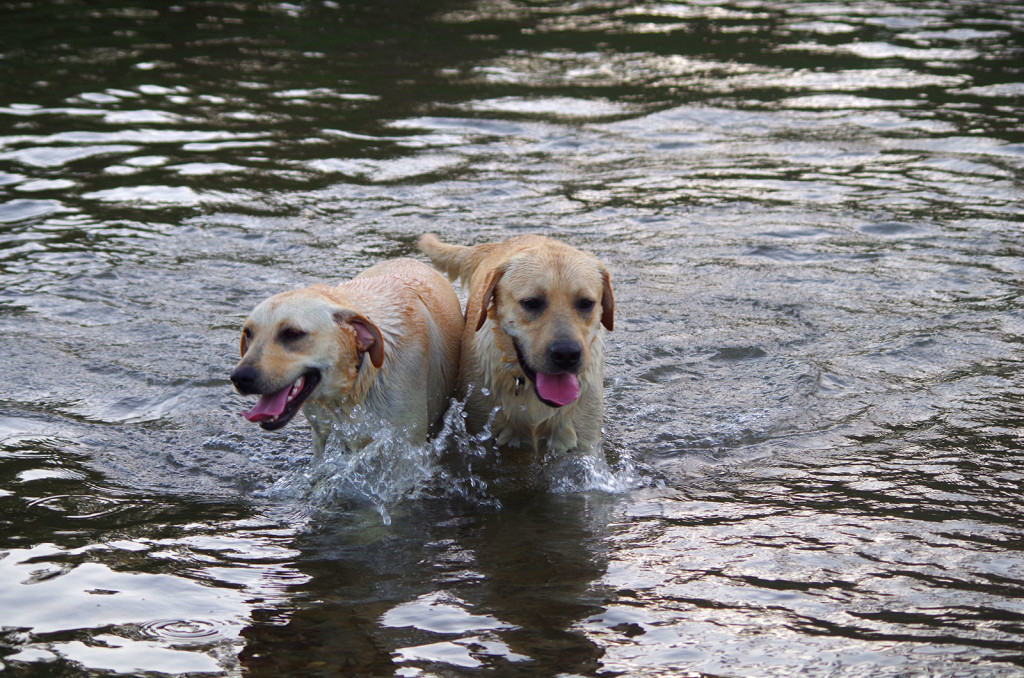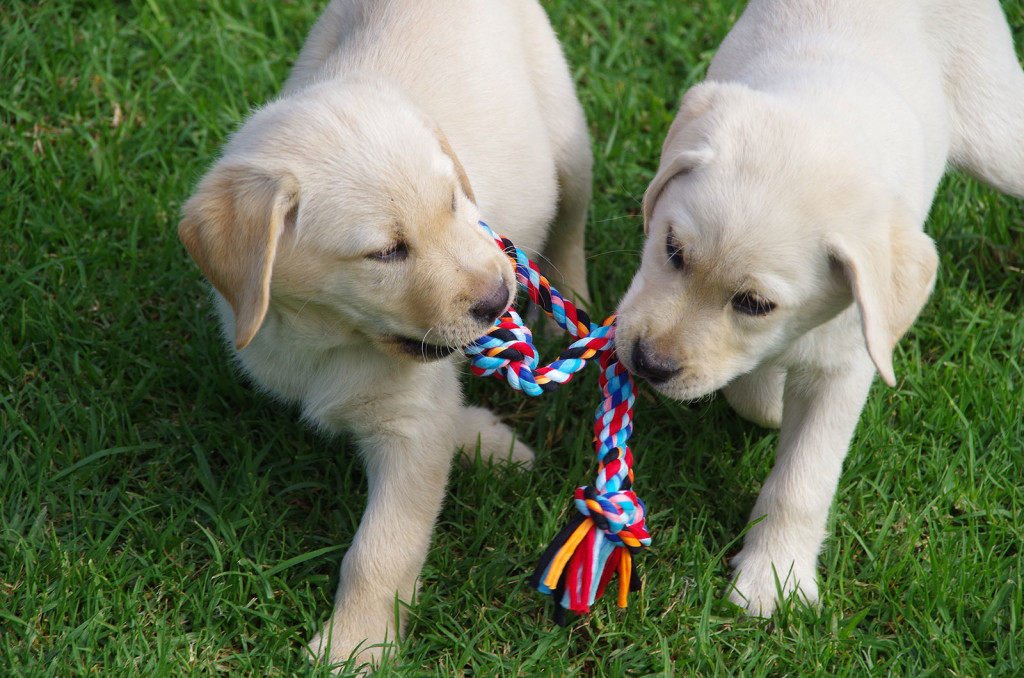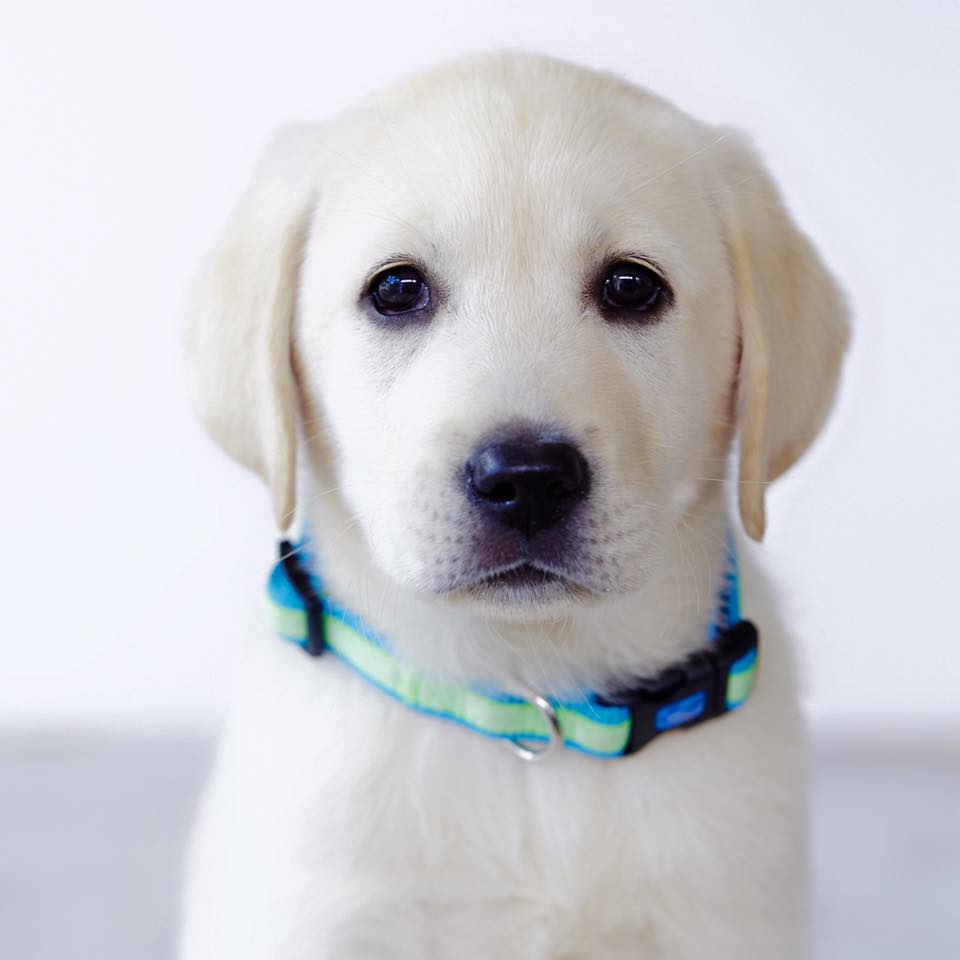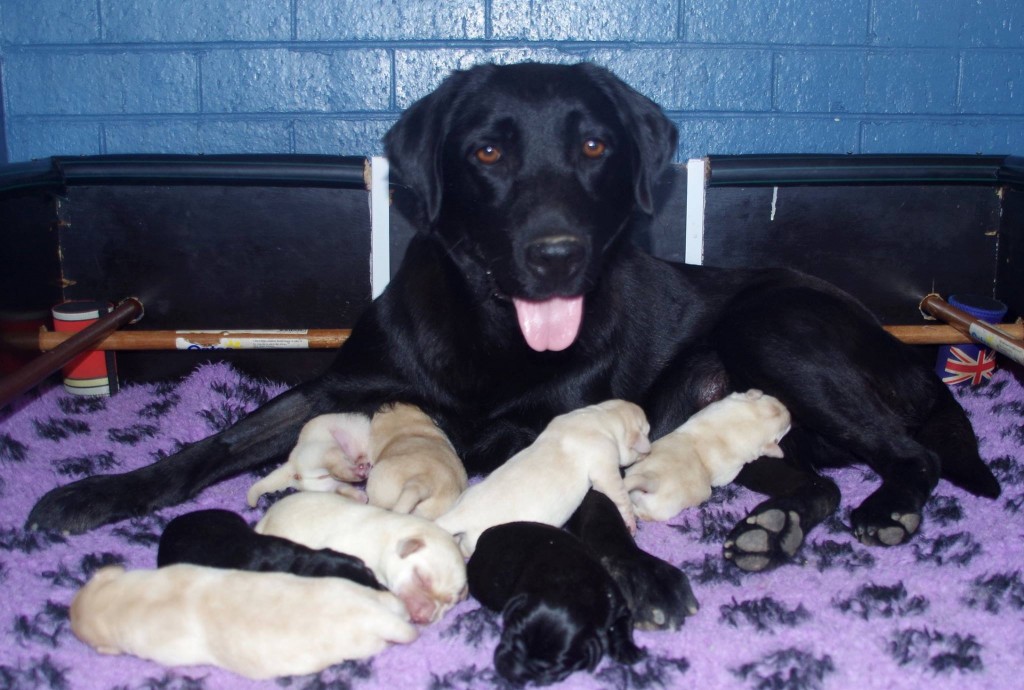About Dowlfalls Labrador Retrievers
Dowlfalls Labrador Retrievers are situated near Kempsey on the Mid North Coast of NSW, in the beautiful Upper Macleay Hinterland.
We are registered Labrador Retriever Breeders and take great care to breed excellent temperament, quality and soundness.
Our Puppies are raised with lots of socializing and love. They are reared right in the middle of a busy farm. They always seem to get lots of visitors from our local community.
Dowlfalls Labradors are Members of Royal NSW Canine Council and Labrador Retriever Club of NSW Inc. We have 4 - 5 Litters a year which will be posted in our Latest News page, our Facebook page and also on the Dogs Online website.
Labs are loving, people oriented dogs. They are happiest when they are with you. Labs are retrievers and will bring you things they find lying about your house and yard. They tend to be quite patient with children and wonderful family dogs. They are not guard dogs. They may bark protectively but will generally not act more aggressively.
Labs are wonderful people dogs more likely to lick someone to death than hurt them. They tend to be stable, not easily upset by strange things or occurrences. They will take many things in their stride.
The multipurpose abilities of the Labrador, indicated by their use as guide dogs, drug detector dogs, etc is the best indication of their superior stability of temperament and trainability, which them the perfect family pet.
Please don’t hesitate to contact us for advice or when the next lot of puppies are due. Call Carolyn on her Mobile 0428 671 252
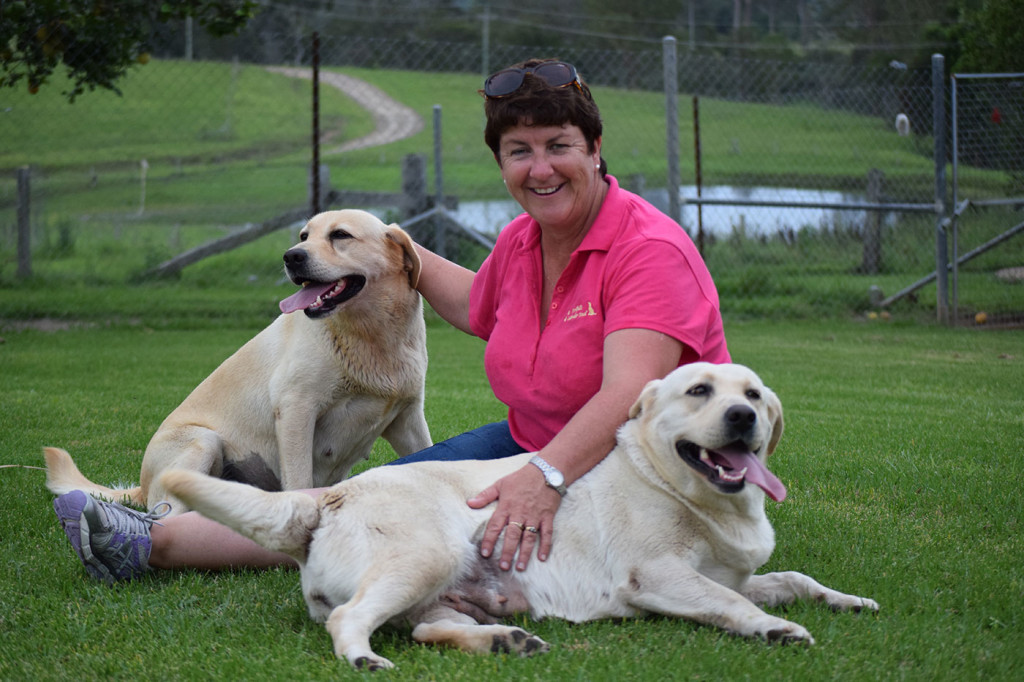
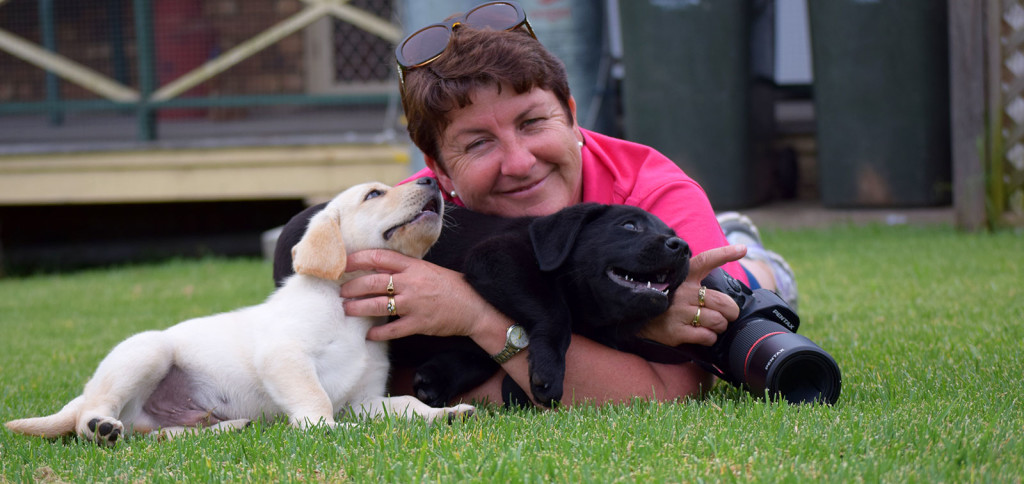
About the Labrador Breed
APPEARANCE
The main characteristics of Labradors are their coat, tail, head and temperament. They have a double coat: a soft downy undercoat that keeps them dry and warm in cold water and a hard outer coat that helps them repel water. Even though their coat is short it is very dense, Labs shed a lot of hair when they moult. Their tail, best described as an otter tail, is thick at the base and tapers to a narrower point. Their head is clean cut and somewhat broad, with hanging ears. Their expression is alert and intelligent and conveys a kind, friendly temperament.
Labradors come in three colours: black, chocolate and yellow. Yellow Labradors are often mistakenly called Golden Labradors. The term yellow refers to a range of colour from nearly white to gold . The Golden Retriever is a separate breed from the Labrador Retriever although there are similarities.
HISTORY
Labradors were originally found, not in Labrador as the name implies, but in Newfoundland, where they were used in many capacities by cod-fishermen. With their short but exceptionally dense coat, they were well suited to cope with freezing salt spray, snowy and icy near-Arctic winds, and with their willingness to help and please which persists to this day, they must have been the most useful helpers.
They were expected to retrieve the fish that slipped out of the net and flapped on the icy surface of the sea. They had to carry the rope end from the boat to the shore in the strongest of tides and stormiest weather. They were strongly built so that they could pull a heavy sled carrying firewood, barrels of fish, and other necessities of life in a place where horses would be useless.
They had to survive and indeed thrive and breed, on the scantiest of food – probably half frozen fish guts, a piece of dried meat, and a surreptitious chew at their own leather harness. All these activities took place in terrible weather conditions, needing the dense waterproof coat which had to be short enough not to ball up in the snow and freezing salt spray. As the work was done in water and on land, in forests, snow drifts and over slippery rocks, an extremely active, well made and balanced dog was required without any structural weakness in its frame, and free from exaggeration anywhere.
The Labrador of today still works in strong tides, and on slippery rocks, in woods and on snow and ice, and exactly the same type of dogs are required today as was used by the fisherman of the cod banks. In the early 1880’s, in the north of England, a few landowners mated together a handful of Labradors that had survived from an earlier importation. These landowners were quick to realise the value of the dogs as a sporting and working dog, and a breeding strain was soon established. The Standard as it is today, has as its keynote soundness and activity, coupled with strength and build. Great stress is placed on three points: the head, the coat and the tail. These are not fancy points but in a subtle way lead to the correct type of dog. In England in 1924 the Yellow Labrador Club was formed to protect the colour and provide classes and Trials for the yellows. In the early 1930’s, a Mrs Austin imported the first Labradors into Australia.
TEMPERAMENT
Labs are loving, people oriented dogs. They are happiest when they are with you. Labs are retrievers and will bring you things they find lying about your house and yard. They tend to be quite patient with children and wonderful family dogs.
Labs are wonderful people dogs more likely to lick someone to death than hurt them. They tend to be stable, not easily upset by strange things or occurrences. They will take many things in their stride.
The multipurpose abilities of the Labrador, indicated by their use as guide dogs, drug detector dogs, bomb detector dogs etc is the best indication of their superior stability of temperament and trainability, which of course makes them the most popular family pet.
CARE & GROOMING
Labradors are very much “wash and wear” dogs. Their coat, being short, does not mat, however a correct Labrador coat is very thick and dense and when they undergo their seasonal moul.
HEALTH
At present in the Labrador Retriever the most identified inherited diseases are hip dysplasia (HD), elbow dysplasia (OCD or osteochondrosis) and some eye diseases. Unfortunately it is not possible to be certain that any puppy will not have an inherited disease. Many inherited abnormalities only show up in mature or advanced age. Some inherited diseases may occur even after generations of breeding from sound stock. It is important to understand that while HD and OCD have an inherited component they can also be influenced by environmental conditions in which the puppy is reared e.g. inappropriate feeding and over exercise.
An advancement where it is now possible to ensure a puppy won’t have an inherited eye disease is in the case of PRA (Progressive Retinal Atrophy). There is now a DNA test available (www.optigen.com) that will determine a dog’s genetic status regarding this recessive disease; i.e. normal, carrier or affected. Therefore if one of the parents is certified DNA normal/clear, then it is guaranteed that none of its progeny will develop PRA. Exercise Induced Collapse or EIC can also affect some dogs.
It is in your interest to purchase your puppy from a breeder who tests and breeds to reduce inherited diseases. Parents of all ANKC registered puppies must be hip and elbow scored. You should request copies of the hip and elbow certificates for both parents. The main disadvantages of pet shops and dealers are the uncertainty of parentage and lack of testing of parents for inherited diseases, lack of knowledge about parents’ temperaments and the adverse effects of spending days or even weeks in a confined space.
Breeders should provide:
(a) Original signed ANKC registration certificates (main or limited register);
(b) Copies of parents’ hip, elbow and eye certificates;
(c) Diet Sheet;
(d) Vaccination certificate and worming details.
Explanation of Certificates
The lower the score, the better the hips and elbows. The breed average for Hip Dysplasia is currently approximately 8.i.e right hip 4, left hip 4, or right hip 5 left hip 3 etc) Evenness of score is more desirable, 0:0 being the best score. Elbow xrays are graded 0, 1, 2 and 3, the best grade being 0. It is not recommended to breed from dogs with elbow scores of Grade 2 or higher.
Please don’t hesitate to contact us for advice or when the next lot of puppies are due. Call Carolyn on her Mobile 0428 671 252
